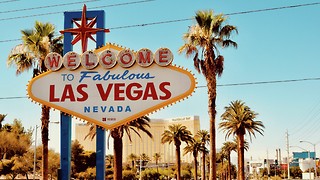Love, Actually: The neural basis of love
Shoomena Anil discusses how ‘love at first sight’ in fact arises from a complex cocktail of chemical changes

Romantic love is a fundamental drive; a mechanism for survival. Contrary to the anatomy referenced by many of our favourite artists, love is not rooted in the heart but in the brain.
The principles of attraction involve pathways in the brain analogous to those that control ‘reward behaviour’. Advances in technology, such as fMRI scanning, have shown the involvement of two brain areas in the love pathway: the ventral tegmental area (VTA) and the caudate nucleus. The VTA is evolutionarily old, forming a part of the primitive neural network. It is associated with pleasure, focused attention and the motivation to pursue rewards, while the caudate nucleus is a region associated with reward detection and expectation. Both these regions undergo high rates of activity when people are shown a photo of someone they are intensely attracted to, compared to when they are shown someone they feel neutral towards.
Unpredictability, mystery and sexual attraction induce hyper-stimulation of the brain’s fear centre, the amygdala. This signals to the adrenal glands, which in turn pump a surge of adrenaline, noradrenaline and cortisol into the bloodstream. Your heart rate increases, your skin flushes and you sweat a little. Sounding a little familiar? Thought so.
Simultaneously, first attractions trigger the release of high levels of dopamine. Dopamine activates the reward circuits that are responsible for addiction to drugs such as cocaine and heroin. In other words, during the early stages of love, you crave the person because they induce a good feeling.
The powerful physical attraction ensued by these transmitters could underlie the basis of what you and I call ‘love at first sight’. Indeed, a study has suggested that it may just be this strong sense of attraction that people identify as love, either instantaneously in the moment or in retrospect.
As you spend more time with this special someone, a different team of neurotransmitters and hormones orchestrate your feelings. As well as dopamine, levels of oxytocin and vasopressin are boosted. In contrast, the stress hormone cortisol is decreased.
Oxytocin, also known as the love hormone, is heightened by skin-to-skin contact and sex, deepening feelings of attachment and provoking contentment, calmness and security. Vasopressin is linked to behaviour that produces long-term, monogamous relationships.
The contrasting yet complementing behaviour induced by these two phases of hormone release may explain why passionate love fades as attachment grows. However, in a study that compared couples who had been married an average of 21 years with couples who were newly in love, the same intensity of activity in dopamine-rich areas of the brain was found. Thus, in the long term, the excitement of romance can remain while the apprehension is lost.
In addition, attraction seems to lead to a reduction in serotonin levels. Interestingly, a similar reduction in serotonin occurs in people who suffer from obsessive-compulsive disorder. Low serotonin levels thus possibly precipitate the overpowering infatuation that characterises the beginning stages of love. Likewise, heartbreak is also associated with low serotonin, and this could potentially underlie the obsession felt after a break-up.
Romantic love is distinguished from platonic love by the presence of high arousal or strong emotions. Whilst platonic love is also associated with the release of oxytocin and vasopressin, it lacks the neurotransmitters that induce the fervour and intensity of romantic love. Thus the differentiation between platonic and romantic love arises due to a unique pattern of neural signatures.
Love also shuts down the neural machinery fundamental to making critical assessments of other people and generating rational behaviour, including parts of the prefrontal cortex. In short, love makes us dumb. Perhaps it is this that underlies the saying ‘love is blind’.
Evidently, romantic love is an addiction; a crippling addiction when it is going poorly, but a perfectly wondrous addiction when it is going well
 Comment / Plastic pubs: the problem with Cambridge alehouses 5 January 2026
Comment / Plastic pubs: the problem with Cambridge alehouses 5 January 2026 News / News in Brief: Postgrad accom, prestigious prizes, and public support for policies11 January 2026
News / News in Brief: Postgrad accom, prestigious prizes, and public support for policies11 January 2026 Theatre / Camdram publicity needs aquickcamfab11 January 2026
Theatre / Camdram publicity needs aquickcamfab11 January 2026 News / Cambridge academic condemns US operation against Maduro as ‘clearly internationally unlawful’10 January 2026
News / Cambridge academic condemns US operation against Maduro as ‘clearly internationally unlawful’10 January 2026 News / SU stops offering student discounts8 January 2026
News / SU stops offering student discounts8 January 2026









